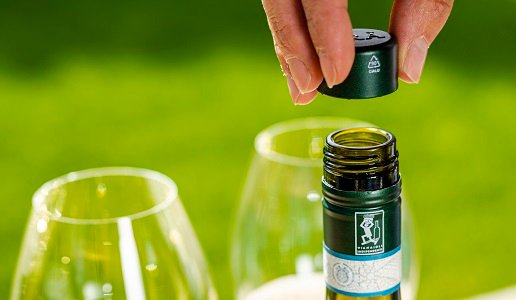Five producers with the same “vision” on corking, Jermann, Walter Massa, Franz Hass, Pra, Pojer and Sandri, presented their idea supported by tasting and Professor Mattivi’s studies.
Bringing 130 people to the Euganean Hills to hear about caps is not easy; it probably takes a bit of craziness and a strong and interesting “content” (not a photo) that captures attention. The Svitati succeeded by virtue of their authority and the strong idea they wanted to communicate.

But who are the “Sivtati”? Five producers with the same “vision” on capping that has been consolidated over time and after several years of comparisons. Their names: Jermann, Walter Massa, Franz Hass, Pra, Pojer eSandri. Their idea is to use the screw cap on the entire production of white wines and beyond.
At the welcome dinner we were offered several wines of different vintages with two corks, cork and screwcap. Objectively, the further back we went, the more the olfactory and visual scissors “opened up” in favor of the screwcap. It must be pointed out that what most penalized the cork was the high variability among the bottles in the tasting between 7 and 10 years old, some very good, others (alas the majority) less so.

A result that in the technical tasting the next day was confirmed quite clearly on the white wines with some interesting reflections. The first is that cork sometimes pays for faults that are not its own; often the tolerances on the production of bottles. especially the necks of the bottles. are too wide and cork, despite its wonderful elasticity, fails to compensate for them (even worse goes with other corks) but no one (the producers do) checks the necks of the bottles.
The second concerns red wines. In the case of Walter Massa Monleale 2016 (Barbera with Croatina) the cork had allowed a better harmonization of the gustatory part of the wine which was more balanced with better tannins. On the Pinot Noir Schweizer 2015, on the other hand, the olfactory aspect was more intact on the screw cap while on the palate it becomes a personal matter on the interpretation of the evolutions.
Of great interest, it could not have been otherwise, was the talk by Professor Fulvio Mattivi, University of Trento and Edmund Mach Foundation, who not only remarked on the difference between data, opinions and considerations, but also commented in detail on some papers on different corking produced by the University of Bordeaux and the University of Adelaide. These papers insisted with detailed analyses on the influence of corking in the interaction with oxygen, hence the usefulness of sulfur dioxide as an expendable element for the better preservation of wines. Once depleted, further exposure to oxygen leads to oxidation of the wine, with loss of fruit characters, darkening of color and development of “oxidized” aromas and flavors.

These papers were mostly devoted to white wines. In this regard, great interest was aroused by the part of the talk that highlighted how degradation due to oxygen intervenes first on colors than on odorous substances, and also how in screw caps the permeability of the new membranes allowed better management of the free sulfur-oxygen ratio, also allowing good polymerization of tannins.



